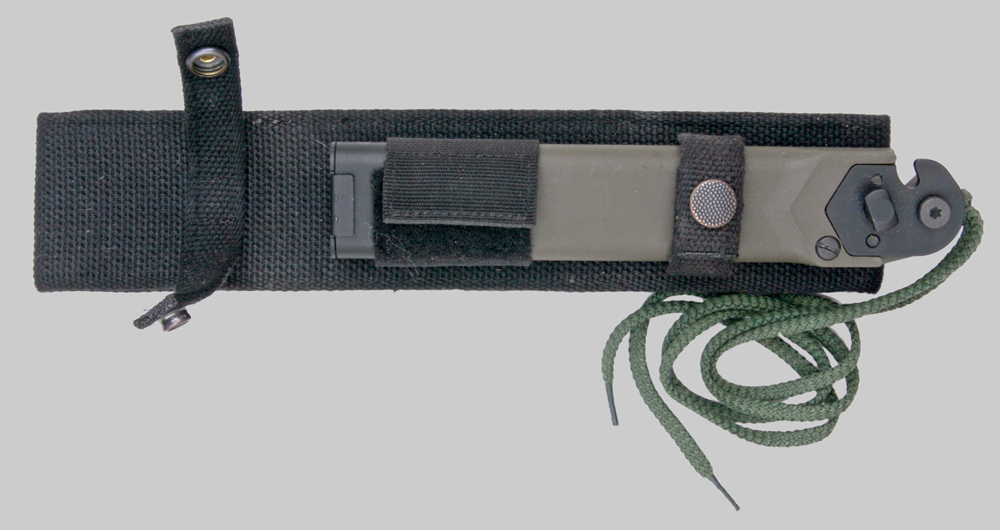In the decade following the outbreak of World War II, all of the major powers produced an infantry rifle without the ability to mount a bayonet. Without a single exception, every one of these were redesigned to accept a bayonet or or replaced with a rifle that did within five years. Since the mid-1950's, every infantry rifle adopted by a major army has mounted a bayonet.
The bayonet has stood the test of time. It's rich history is one of evolution, not transformation. It has changed far less than the firearm and its use has hardly changed at all since the mid—1600's. Despite the introduction of the machine-gun, the tank, jet aircraft, and computers to the modern battlefield, the bayonet remains firmly entrenched in military doctrine. Perhaps, someday, the bayonet may go the way of the dinosaur. For the foreseeable future, however, it is here to stay.
The Bayonet System 2000/2005 and B2K, produced in Germany, are an example of today's advanced bayonet technology. It equips the Canadian Armed Forces, where it is designated the CAN Bayonet 2000. The U.S. Army M9 and U.S. Marine Corps OKC-3S bayonets are additional examples of the advanced, state-of-the-art bayonets fielded today.


Return to History of the Bayonet Index
Back: 1989—The Last Mauser Bayonet
© Ralph E. Cobb 2009 All Rights Reserved



